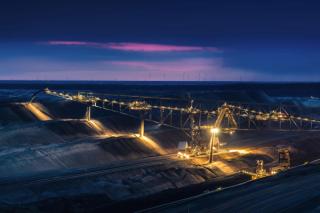
Cultural heritage: Indigenous and cultural heritage values driving sustainable development
by Flavia Kiperman
View post

Healthy soil is essential for life. Soil has mana, and is taonga. Soil provides the basis for life, puts food on our tables, and preserves ecosystems. Yet in Aotearoa New Zealand, we have been treating soil as a ‘waste’. According to the Ministry for the Environment’s waste statistics for New Zealand, approximately 3.5 million tonnes of soil are disposed of at landfills and cleanfills each year!
While earthworks are necessary as part of residential and commercial developments, either to meet geotechnical requirements or to remove contaminated soil, there are market and regulatory drivers, in addition to legacy management approaches that incentivise removing more soil than is necessary.
This unsustainable management of surplus soils leads to direct and indirect adverse effects, from the loss of biodiversity to the filling of landfills (specifically designed to accept waste) with soil. We are essentially moving soil from one hole in the ground to another.
Soil is viewed as a ‘waste’ when it is deemed surplus on a site. The growing perspective is that surplus soil should not be viewed as a waste but rather a resource. There is also an inherent irony in that many development sites will scrape and dispose of surplus soil from a site at one stage, only to import new soil (or cleanfill) at a later stage for landscaping purposes. This only further highlights the industry-wide unsustainable approach to soil management.
There are several challenges we face to overcome this issue and allow better re-use of surplus soils, including:
As a Contaminated Land industry, there have been growing calls for action both globally and in Aotearoa New Zealand. As many companies look at ways of improving sustainability and achieving better outcomes for the environment, this is likely to be a focus area of the industry for the coming years.
Industry body groups such as WasteMINZ have been driving the industry response, starting with the well received sessions on Creating a Circular Economy for Soils at their 2023 Conference and following up with a highly anticipated ‘Can You Dig it’ Soil Reuse Workshop at the 2024 Conference. Three contaminated land experts at SLR are looking forward to joining the discussions at the Workshop, as well as presenting several presentations and supporting as a table facilitator.
This workshop will build on the work done by the industry so far, including:
The aim of the WasteMINZ workshop is to use the collective knowledge of the industry to prepare a white paper to share with policy makers, legislators, and local and central government. SLR is very excited to be part of this workshop and lead the change in this space.
SLR has been working with our clients to educate on the subject of surplus soils and refocus their thinking to value soil as a resource.
In one instance, we have worked with a client to better characterise surplus soil on-site, engaged with regulators and outlined a consenting strategy that allowed low-level contaminant impacted soil to be repurposed on a different property, which would otherwise need to receive ‘cleanfill’ as per the consent conditions. Not only did this solution divert approximately 3,000 m3 (~5,400 tonnes) of soil from landfill, but also resulted in significant overall cost savings (>$1 million saved in landfill disposal costs alone).
Our approach to achieve more sustainable outcomes is through:
If you would like to discuss further, please reach out to James Blackwell or Nigel Mather.

by Flavia Kiperman

by Jasper Schrijvers , Matthew Hoare

by Clodagh Connolly, Nicola Inge, Andres Schottlaender